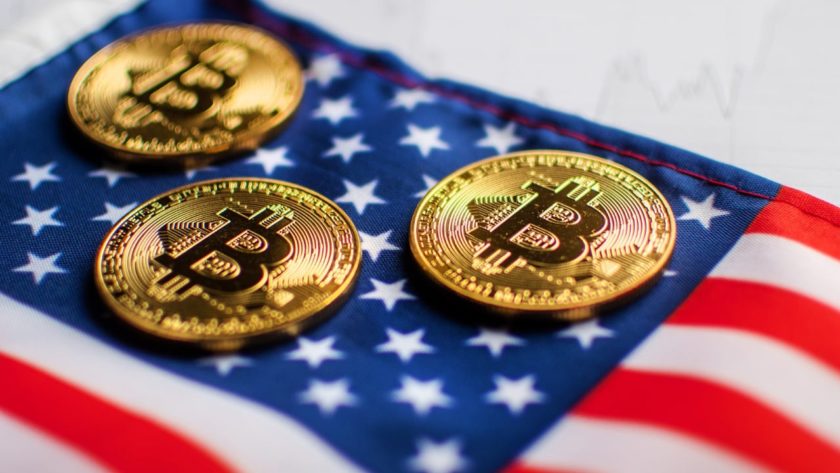David G Leibowitz is Global Macro Portfolio Manager, CIO Lebo Capital Management, and co-founder of LeboBTC Ledger Group.
I started my 39-year career as a Wall Street trader in the summer of 1981, watching the end (or the beginning, depending on your point of view) of the debt super-cycle, as Fed Chair Paul Volker raised the Federal Funds rate to 20% to cripple the 1970s energy-led inflationary spiral. Central bank actions – the raising and lowering of interest rates to fuel lagging economies or tame overly strong ones – were the backbone of my ability to identify trends, articulate value and manage risk.
That invaluable input is now dead, crushed by the “too big to fail” policies of former Fed Chairman Ben Bernanke’s response to the Great Recession, decimated by The European Central Bank’s (ECB) Mario Draghi’s 2012 “whatever it takes” framework, and finally buried by current Fed Chairman Jerome Powell’s March, 2020 suggestion that the Fed would provide essentially unlimited lending to support the economy ravaged by the COVID-19 pandemic.
Today’s global Central Bank policy is understood as Modern Monetary Theory, an accommodation of fiat governments’ financial demands met by simply moving a decimal point on an infinite balance sheet of government debt. The global debt load has now exceeded a tipping point: interest rates will not be allowed to rise from near zero as the governments of the world can never afford to pay higher interest on their debt, let alone the debt itself. It’s official: the emperor has no clothes.
Unlike the V-shaped recovery of the 2008 Great Recession, the COVID-19 pandemic will likely prove to be the biggest shock the global economy has ever seen. The world’s foremost economists are expecting the recovery to take an L-shape, elapsing over a multi-year time frame, regardless of the unlimited money printing of the central banks. Unemployment is likely to stay high for an extended period of time, and in the coming “new normal”, many jobs aren’t coming back.
All of that said, I am not despondent. Taking Chairman Powell at his word, government actions addressing this pandemic are likely to be unlimited. It’s reasonable to envision FDR-type projects involving infrastructure spending and reorganization of supply chains, regardless of the results of the November 2020 U.S. election. And, as desperate times call for desperate measures, one policy response, adopted by the Bank of Japan in 2010, was to allow the Central Bank to buy ETFs.
On April 6, Janet Yellen, former Chairman of the Fed, said in an interview that perhaps, “Congress should reconsider the powers that the Fed has with respect to assets it can own.” If the American government steps in and supports the stock market through direct purchases of stocks or ETFs, the crisis may not be solved, but a floor would be put under the equity market.
With global interest rates for government “guaranteed” debt near zero (or negative), the asset class that was fixed income has disappeared. The implications are staggering. Investment portfolios, which have historically held a split of fixed income and equity investments with a balance based on risk orientation and horizon, are now scrambling to replace lost yield. With the bond markets of the world fully priced, fixed income assets that still have a modicum of yield (such as high yield and emerging market debt) have a risk profile more like that of a stock than a cash flow consistent with secure fixed income returns. Where will capital find returns in the 2020s?
Portfolio Reallocations
Certain investment implications seem obvious. The stock market, once it finds a floor, should mount a rally like it did coming out of the Great Recession. In today’s case, there are potentially three pillars of equity support: the fiat printing presses that are working overtime; monies coming out of fully priced fixed income assets; and the potential of government-sanctioned equity purchases. Should this prove accurate, historical highs in stock P/E ratios will likely get dwarfed in the coming equity investment rush.
What of alternative assets? Real estate, the historical ‘first’ of alternatives, is getting disrupted by an evolving work-at-home cultural shift, and by the new demands of social distancing which will reshape commercial capacity in store fronts, restaurants, hotels, theaters, stadiums, etc. That said, ultra-low interest rates should benefit the real estate sector over time.
Gold, a 5,000-year-old store of wealth, should make new highs (above $2,000/oz.) as a safe haven of portfolio diversification, as an acknowledgment of the accelerating debasement of all fiat currencies, and as a hedge against inflation and the fear of social unrest. And last but hardly least, cryptocurrency, and in particular, Bitcoin.
Bitcoin
Bitcoin was created in 2008 through a much lauded white paper. In the height of the Great Recession, failures in the banking system gave birth to a new (strictly digital) asset class called cryptocurrency.
Cryptocurrency is the third stage in the evolution of the Internet, following email and the web browser. Analogous to email (a free, 24×7 messaging rail on the Internet), Bitcoin (BTC) is a free, peer-to-peer payment rail that works using the internet, 24/7. It has been described by some as e-cash, digital currency and digital gold, representing a store of wealth independent of the banking system.
Bitcoin is a store of always accessible money, divisible out to eight decimal places. With any mobile device or computer, users can access their digital funds, stored on the Internet, from anywhere in the world. Bitcoin owners are in essence their own bank. With just a password in one’s head, physical borders can be crossed without fear of confiscation of one’s wealth.
Bitcoin is a hedge against the debasement of fiat currencies by governments and their Central Banks. Its construct has a finite supply (only 21 million Bitcoin will ever be created) and hence it is a digitally scarce asset, and an inflation hedge. At the time of writing, with a market cap of $165 billion at around $9,000/BTC, it has an estimated 50 million users/investors, and approximately $30 billion moves on the Bitcoin blockchain daily.
As a young technology, Bitcoin has an extraordinary 10+ year track record. There have been a number of observers that have posited that Bitcoin should have at least a 1% allocation to all investment portfolios. If a balanced investment portfolio of stocks and bonds had a 5% allocation to Bitcoin from 2015 through 2019, the portfolio would have doubled its performance.
Bitcoin has been called Gold 2.0. It may prove to be a better store of value than gold as the shiny metal is expensive to buy, expensive to store, expensive to transport, and unusable as an everyday currency. The market cap of gold (at $1,700/oz.) is approximately $9 trillion. Should Bitcoin’s market cap reach 10% that of gold’s, a single bitcoin would be worth $42,000. Should it become equal to that of gold, a bitcoin would be worth $428,000/BTC.
Looking ahead
With the destruction of the fixed income markets, the search for investable alpha has already begun. The banking system has lost an asset class that represented a huge share of its annual fees. Bitcoin, young and maturing quickly, is already being offered to select clients by several global asset managers and international banks.
It’s when, not if the asset class that cryptocurrency goes mainstream. Bitcoin hit its high in December, 2017 at $20,000/BTC. With accelerated adoption, the current entry point of roughly $9k/BTC seems like a value proposition.
The security concerns of hacking and theft are disappearing quickly as major cryptocurrency exchanges and custodians are beginning to offer insurance, and some are offering interest on digital assets held on their platforms. The value of bitcoin as a secure (and stable) investment is being re-analyzed in light of the recent equity and energy selloffs and the ongoing debasement of fiat currencies, a negative store of value.
There are no sure things in life (or investing) and headwinds still exist for the cryptocurrency markets, such as defined regulation and taxation by the bodies politic. That said, Japan, Switzerland, and India amongst others have already begun to lay the groundwork for global definition. The U.S., which is behind the curve, has defined Bitcoin as property and not as a security, and further clarity is expected. There are active futures contracts in Bitcoin, and the CFTC just sanctioned a sixth derivatives platform. With expected institutional demand on the immediate horizon, the case for an investment in the cryptocurrency market is strong and getting stronger.
COVID-19 has put an exclamation point on the end of the interest rate super-cycle. The elimination of fixed income as an investable asset class hastened the death of global macro investing, which has been dying since the introduction of negative interest rates by the ECB in 2014. Alpha is hard to come by and there simply aren’t enough assets to trade and arbitrage anymore.
Bitcoin is a bright light, perhaps a beacon of opportunity for traders and investors alike in what I expect to be the next decade’s debt-fueled, zero-interest-rate-led Roaring Twenties.
The leader in blockchain news, CoinDesk is a media outlet that strives for the highest journalistic standards and abides by a strict set of editorial policies. CoinDesk is an independent operating subsidiary of Digital Currency Group, which invests in cryptocurrencies and blockchain startups.




